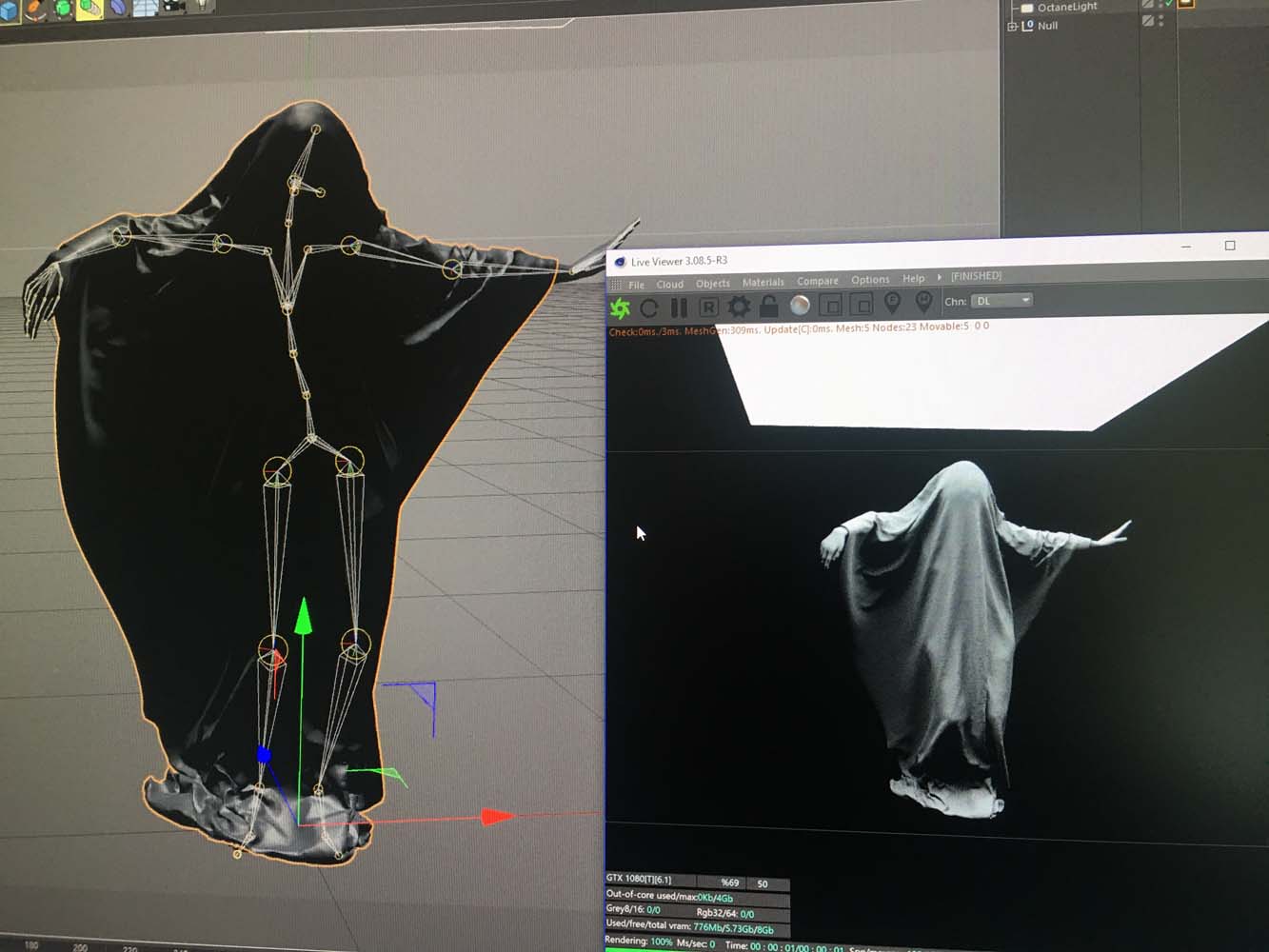KATERINA ATHANASOPOULOU
Her Voice Through the Ghost Veil.
ABSTRACT
My video shares some of the research and practice behind Her Voice (Athanasopoulou, Ikoniadou, 2019), a short film investigating maskirovka and the ghost veil through animation, motion capture (mocap) and digital simulation. The digital costume, sewn and simulated on the avatar as she performs a hybrid dance, is a ghost veil affected by the re/traced gestures of the original mocap performer. Drawing from Diana Taylor’s ‘The Archive and the Repertoire’ (Taylor, 2003) I examine motion capture as a repository of captured gestures, ghosts from the past that project towards the future as they animate the digital fabric in real-time. It is through this simultaneity of past and future within the simulation that the digital costume gains its agency: pressing the play button signals the start of a software performance, where the digital costume is initially directed by the mocap, but then fashions completely new forms, folds and configurations. Certain unsettling facets of agency can be heard in Mark Fisher’s question: “Is there anything out there at all — and if there are agents, what is their nature?” (Fisher, 2017). This preoccupation with the unknown may be echoed in the ‘sense of danger’ that, according to Steve Dixon, haunts live performance (Dixon, 2007); a sense of the unpredictable, whether positive or negative, exists also in witnessing a digital simulation: each performance is unique and imperfect, the cloth gets tangled in the digital body, the movement glitches while I use the mouse to tease out the fabric which flows/flaws in response. Looking out for moments of beauty and failure, I restart and return to this ever-new performance, spectate and document it into a new choreography that embraces the accident and anticipates the agency of the costume.
BIOGRAPHY
Katerina Athanasopoulou is a Greek artist living in London who creates animation for cinema and gallery space. She studied Fine Art at Aristotle University in Greece and Animation at the Royal College of Art in England. Her films have been shown internationally at film festivals and galleries, including Clermont-Ferrand International Short Film Festival, Thessaloniki Biennale 5, European Media Art Festival, Centre des Arts Actuels Skol, The Museum of Contemporary Art, Zagreb and London International Animation Festival. Katerina works as an independent filmmaker, and also collaborates with other artists for short films, documentaries and installations. She has been commissioned by the Bill and Melinda Gates Foundation, London College of Fashion, the Onassis Foundation, Animate Projects and Channel 4. Katerina is currently a PhD candidate within the School of Humanities and Performing Arts at Plymouth University, researching the intersections between animation, documentary and virtual reality.
Photo credits:
- Cathy Greenhalgh
- Process screengrab from the making of Her Voice
Her Voice Credits
Her Voice, short animated film, 6’, HD/dimensions variable, 2019
A film by Katerina Athanasopoulou & Eleni Ikoniadou
Narrated by Souzana Zamfe
Scored by Savvas Metaxas
Commissioned by AUDINT
Funded by Arts Council England



